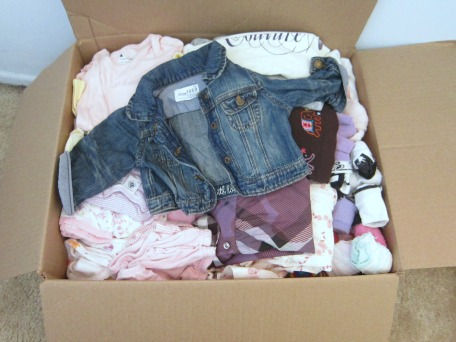10 Essential Tips for Creating a Baby Budget That Actually Works
- Theresa Garcia

- Nov 26, 2024
- 4 min read

Bringing a baby into the world is an exciting and life-changing experience, but it also comes with its share of financial challenges. From diapers to daycare, the costs can add up quickly, making it crucial to plan ahead. A well-thought-out baby budget not only helps you manage expenses but also reduces stress, allowing you to focus on enjoying precious moments with your little one.
Here’s a step-by-step guide to creating a baby budget that works for your family, no matter your financial situation.
Step 1: Assess Your Current Financial Situation
Before diving into baby expenses, start with a clear understanding of your current financial health.
Calculate Your Income: Note all sources of income, including salaries, bonuses, and any side hustles.
List Your Expenses: Break down your spending into categories like housing, utilities, groceries, transportation, and discretionary spending.
Evaluate Savings and Debt: Know how much you have in savings and what you owe on credit cards, student loans, or other debts.
This baseline gives you a clear picture of where your money is going and how much you can allocate toward baby-related expenses.
Step 2: Estimate Baby-Related Costs
Babies come with a long list of needs, some one-time purchases and others recurring. Here’s a breakdown of common expenses to include in your budget:
One-Time Expenses
Nursery Setup: Crib, mattress, changing table, rocking chair, and decor can cost between $500 and $2,500.
Gear: Stroller, car seat, high chair, baby monitor, and other essentials range from $1,000 to $3,000 depending on your preferences.
Clothing: Babies grow quickly, so plan for initial wardrobe costs of $200 to $500.
Recurring Expenses

Diapers and Wipes: Budget $50 to $80 per month for disposable diapers or invest in reusable cloth diapers.
Formula and Feeding Supplies: If not breastfeeding, formula can cost $50 to $150 per month, plus bottles and accessories.
Childcare: This is often the biggest expense, ranging from $400 to $1,500 per month depending on location and type of care.
Medical Costs: Include co-pays for pediatric visits, vaccinations, and any out-of-pocket expenses.
Miscellaneous
Baby Classes: Mommy-and-me classes, music, or swim lessons may cost $20 to $50 per session.
Toys and Books: Set aside $100 to $300 annually for entertainment and educational items.
Step 3: Prioritize Needs Over Wants
It’s easy to get carried away with cute baby outfits and fancy gadgets, but staying focused on essentials will keep your budget on track.
Stick to Must-Haves: Invest in items that contribute to your baby’s safety and well-being, like a quality car seat and crib.
Delay Non-Essentials: Wait to purchase items like walkers or baby shoes until they’re needed.
Embrace Minimalism: Babies don’t need a lot of stuff. Many parents find that less is more when it comes to toys and gear.
Step 4: Find Ways to Save
Raising a baby doesn’t have to break the bank. Use these strategies to reduce costs without sacrificing quality:
Buy Secondhand
Look for gently used baby gear on platforms like Facebook Marketplace, consignment shops, or from friends and family.
Double-check safety standards, especially for car seats and cribs.
Borrow rarely-used items like a bassinet or baby swing from friends.
Some baby gear rental services offer short-term solutions for travel or special occasions.
Use a Registry
Create a baby registry to share with friends and family. Focus on essentials to get the most value from gifts.
Coupons and Discounts
Sign up for rewards programs from retailers like Target, Amazon, or Buy Buy Baby.
Clip coupons for diapers, formula, and other baby supplies.
Breastfeed If Possible
Breastfeeding can save hundreds of dollars annually on formula costs. Consult a lactation expert if you need help getting started.
Step 5: Plan for Unexpected Expenses
Babies are full of surprises, and so are their costs. Build a cushion into your budget for unforeseen expenses such as:
Emergency doctor visits or medications.
Replacing broken or outgrown items.
Extra childcare during family emergencies.
Aim to set aside at least $500 to $1,000 as a baby emergency fund.
Step 6: Adjust Your Budget as Your Baby Grows
Your baby’s needs will change over time, so it’s essential to revisit your budget regularly.
The First Year: Expect higher costs for diapers, formula, and medical visits.
Toddler Years: Childcare may continue to be a significant expense, but you’ll save on diapers if your child transitions to potty training.
Preschool Years: Shift savings toward educational supplies, extracurricular activities, or preschool tuition.
By planning for these transitions, you can avoid surprises and maintain financial stability.
Step 7: Make Use of Free and Low-Cost Resources
Explore community programs and resources that can help lighten the financial load:
Diaper Banks: Organizations like the National Diaper Bank Network provide free diapers to families in need.
Local Libraries: Free storytime events and access to parenting books can be invaluable.
Parenting Groups: Many offer free or low-cost support, activities, and clothing swaps.
Step 8: Involve Your Family and Friends

Don’t hesitate to lean on your loved ones for support:
Ask for hand-me-downs.
Organize a meal train after the baby arrives to save on food costs.
Suggest practical gift ideas for baby showers, like diaper subscriptions or gift cards.
Step 9: Use Technology to Stay on Track
Budgeting apps and tools can simplify the process and help you stay organized:
Mint: Track expenses and set budget goals.
EveryDollar: A user-friendly app based on the zero-based budgeting method.
BabyList: Combine baby registries, checklists, and price comparisons in one app.
Step 10: Celebrate Small Wins
Creating and sticking to a baby budget is no small feat, so take time to celebrate your successes. Whether it’s saving on a big-ticket item or sticking to your monthly diaper budget, acknowledging these wins will keep you motivated.
Preparing for a baby is an exciting journey, but it’s also a time for careful planning. By assessing your financial situation, prioritizing essentials, and finding creative ways to save, you can create a baby budget that truly works. Remember, every family’s situation is unique, so tailor your budget to your needs and adjust as you go.
With a solid plan in place, you’ll be ready to welcome your little one with confidence and peace of mind.
Have questions about budgeting for a baby or want to share your tips? Drop them in the comments below—we’d love to hear from you!






Comments